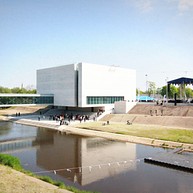Section in Poznan
Do & See
Magnificent buildings in Poznan, whose façades centuries ago witnessed the rising of a fedgling state, stand proudly and harmoniously embraced by the miracles of modern architecture. The city’s many museums tempt passers-by with their
rich collections. Poznan today is a dynamic and an ever-expanding centre of learning with more and more students moving to the city each year. This is a city which you can keep exploring endlessly, always finding something interesting or exciting.
Read more


















